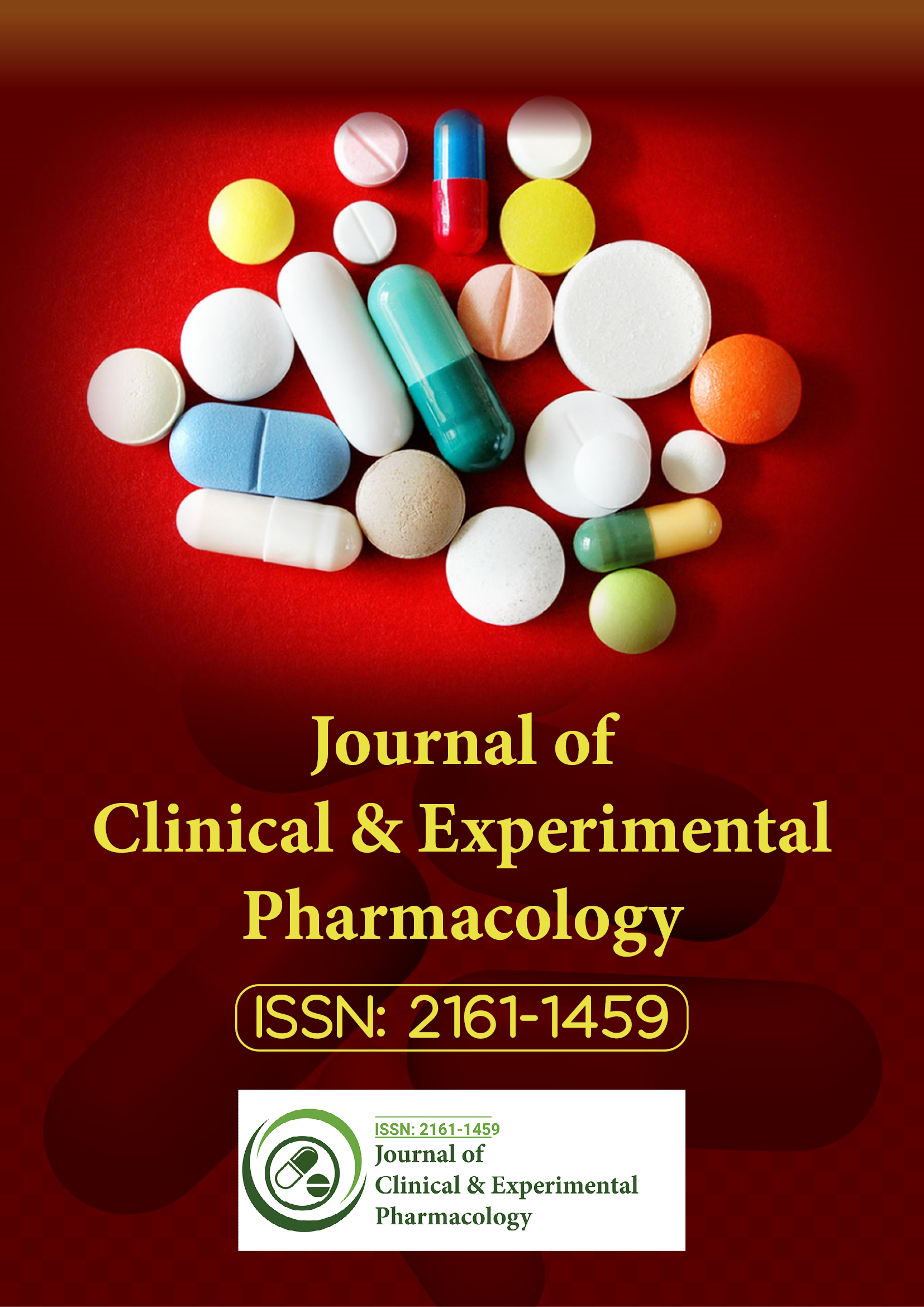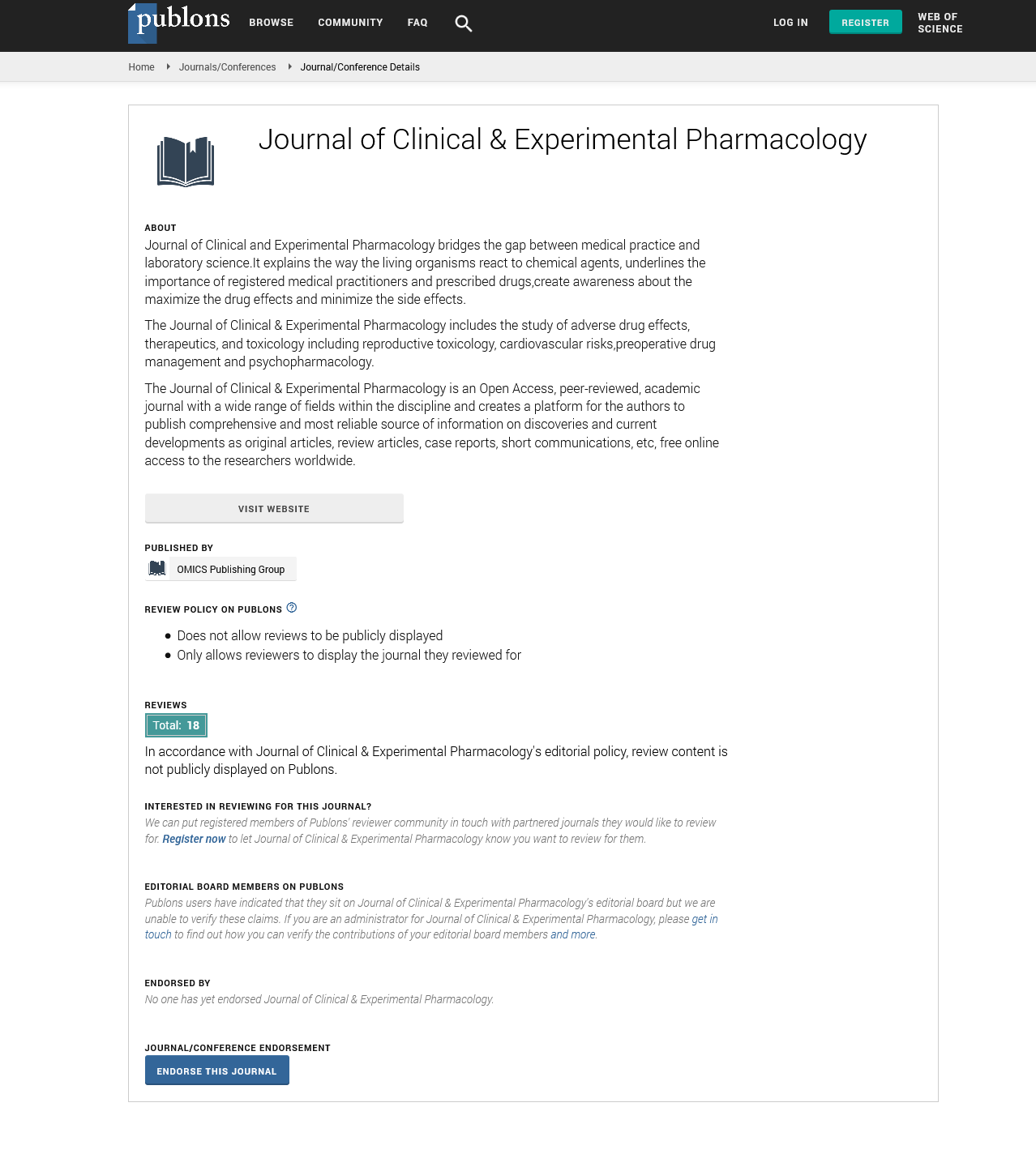Indexed In
- Open J Gate
- Genamics JournalSeek
- China National Knowledge Infrastructure (CNKI)
- Ulrich's Periodicals Directory
- RefSeek
- Hamdard University
- EBSCO A-Z
- OCLC- WorldCat
- Publons
- Google Scholar
Useful Links
Share This Page
Journal Flyer

Open Access Journals
- Agri and Aquaculture
- Biochemistry
- Bioinformatics & Systems Biology
- Business & Management
- Chemistry
- Clinical Sciences
- Engineering
- Food & Nutrition
- General Science
- Genetics & Molecular Biology
- Immunology & Microbiology
- Medical Sciences
- Neuroscience & Psychology
- Nursing & Health Care
- Pharmaceutical Sciences
Commentary - (2025) Volume 15, Issue 3
Nanotechnology in Pharmaceutical Research: Opportunities for Drug Solubility and Bioavailability
Liam Mark*Received: 06-Jun-2025, Manuscript No. CPECR-25-29366; Editor assigned: 09-Jun-2025, Pre QC No. CPECR-25-29366 (PQ); Reviewed: 23-Jun-2025, QC No. CPECR-25-29366; Revised: 30-Jun-2025, Manuscript No. CPECR-25-29366 (R); Published: 07-Jul-2025, DOI: 10.35248/2161-1459.25.15.482
Description
Nanotechnology has rapidly become a prominent area of innovation in pharmaceutical research, particularly in addressing longstanding challenges related to poor drug solubility and limited bioavailability. A large proportion of Active Pharmaceutical Ingredients (APIs) identified in drug discovery are poorly water-soluble, which impedes their absorption in the gastrointestinal tract and reduces therapeutic efficacy. Nanotechnology-based approaches aim to enhance the delivery and performance of these compounds by altering their physical and chemical characteristics at the nanoscale.
Nanoparticles, by definition, range in size from 1 to 1000 nanometers and possess unique properties due to their small size and high surface area-to-volume ratio. When used as carriers for pharmaceutical agents, they can improve dissolution rates, enhance permeability across biological membranes and enable controlled or site-specific drug release. These features are particularly valuable for hydrophobic drugs that exhibit low oral bioavailability.
One of the most common nanotechnology platforms in pharmaceutical research involves the use of polymeric nanoparticles. These carriers, composed of biocompatible and biodegradable polymers such as Poly-Lactic-Co-Glycolic Acid (PLGA), can encapsulate poorly soluble drugs and protect them from degradation in the gastrointestinal tract. Once ingested, the particles gradually release the drug in a controlled fashion, maintaining plasma concentrations within a desired therapeutic range and reducing the need for frequent dosing.
Another approach involves the development of nanocrystals, which are pure drug particles reduced to nanoscale dimensions and stabilized with surfactants. Nanocrystals significantly increase the drug’s surface area, thereby improving its dissolution rate. This strategy has been applied successfully in commercial products such as fenofibrate and sirolimus formulations, which previously had poor oral bioavailability. These drugs now achieve better plasma levels at lower doses, improving both patient adherence and therapeutic outcomes.
Lipid-based nanoparticles, including solid lipid nanoparticles and nanostructured lipid carriers, offer another solution for solubility and stability issues. These carriers are especially useful for lipophilic drugs, providing a matrix that can dissolve the drug and facilitate its transport across biological membranes. The lipid content of these systems also helps in bypassing hepatic first-pass metabolism via lymphatic absorption, which can lead to improved systemic exposure.
Self-Emulsifying Drug Delivery Systems (SEDDS) represent another class of nanoformulations used to enhance the bioavailability of hydrophobic drugs. These systems are composed of oils, surfactants and solvents that spontaneously form fine oil-in-water emulsions upon contact with gastrointestinal fluids. The resulting nanoemulsions facilitate solubilization and absorption of the drug, even in the challenging conditions of the digestive tract.
Apart from oral delivery, nanotechnology has also enabled the development of formulations for parenteral, transdermal and pulmonary routes. Intravenous nanoformulations can increase the solubility of drugs that would otherwise precipitate in aqueous solutions, while minimizing the need for harmful co-solvents. Transdermal nanoparticles can penetrate the stratum corneum and deliver drugs directly into systemic circulation or local tissues, offering a non-invasive alternative to injections. Inhalable nanoparticles are being explored for the treatment of respiratory diseases, where they can deliver drugs deep into the lungs and achieve rapid therapeutic effects.
The ability to tailor nanoparticle characteristics such as size, surface charge and hydrophobicity has enabled researchers to optimize drug absorption and distribution profiles. Coating nanoparticles with hydrophilic polymers like Polyethylene Glycol (PEG) reduces protein adsorption and extends circulation time in the bloodstream, a phenomenon known as the "stealth effect." This modification is especially valuable for systemically administered drugs where prolonged exposure is desired.
Moreover, nanotechnology allows the co-delivery of multiple agents in a single carrier. This is beneficial in combination therapies, where different drugs need to act in synergy. Nanocarriers can deliver these agents at a controlled ratio and timing, which may enhance efficacy while reducing the risk of toxicity. This strategy has been applied in cancer and infectious disease research, with several formulations undergoing clinical evaluation.
Despite the promise of nanotechnology in pharmaceutical research, certain limitations and challenges remain. The scalability of production methods, long-term stability of nanoformulations and regulatory uncertainties can impede the transition from laboratory findings to commercial products. Moreover, the interaction of nanoparticles with biological systems is complex and not yet fully understood, requiring extensive in vitro and in vivo studies to assess safety, biodistribution and elimination.
Characterization techniques such as dynamic light scattering, transmission electron microscopy and zeta potential analysis are critical in ensuring product quality and consistency. Additionally, establishing standardized protocols for evaluating nanomedicines will support regulatory approval and facilitate global acceptance of these innovative products.
In conclusion, nanotechnology offers powerful tools to improve drug solubility and bioavailability, addressing a significant barrier in pharmaceutical development. By enabling the effective delivery of poorly soluble compounds, enhancing absorption and allowing controlled release, nanotechnology-based systems contribute to more efficient and predictable therapy. Continued research and collaboration among pharmaceutical scientists, engineers and regulatory bodies will be essential in overcoming existing challenges and advancing the use of nanomedicine in clinical settings. As these systems become more refined and accessible, they are expected to play an increasingly important role in the design of new and more effective treatment options.
Citation: Mark L (2025). Nanotechnology in Pharmaceutical Research: Opportunities for Drug Solubility and Bioavailability. J Clin Exp Pharmacol. 15:482.
Copyright: © 2025 Mark L. This is an open-access article distributed under the terms of the Creative Commons Attribution License, which permits unrestricted use, distribution and reproduction in any medium, provided the original author and source are credited.

